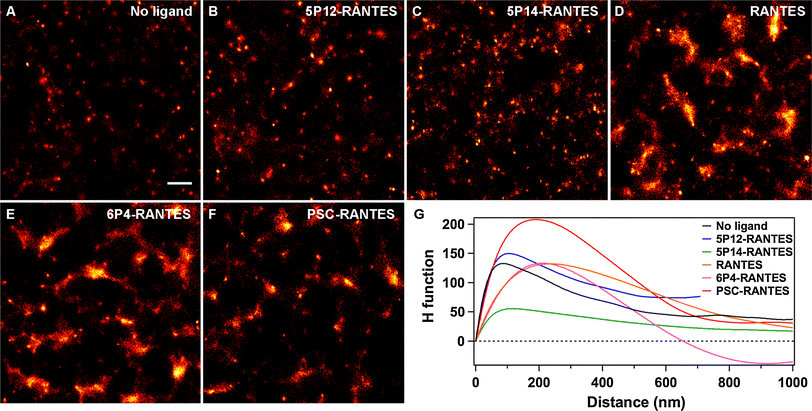Publications
-
Coordinate-based co-localization-mediated analysis of arrestin clustering upon stimulation of the
C-C chemokine receptor 5 with RANTES/CCL5 analogues
Laura Tarancón Díez, Claudia Bönsch, Sebastian Malkusch, Zinnia Truan, Mihaela Munteanu, Mike Heilemann, Oliver Hartley, Ulrike Endesfelder, and Alexandre Fürstenberg
Histochem. Cell Biol. 2014, 142(1), 69-77
 |
G protein-coupled receptor activation and desensitization leads to recruitment of arrestin proteins from cytosolic pools to the cell membrane where they form clusters difficult to characterize due to their small size and further mediate receptor internalization. We quantitatively investigated clustering of arrestin 3 induced by potent anti-HIV analogues of the chemokine RANTES after stimulation of the C–C chemokine receptor 5 using single-molecule localization-based super-resolution microscopy. We determined arrestin 3 cluster sizes and relative fractions of arrestin 3 molecules in each cluster through image-based analysis of the localization data by adapting a method originally developed for co-localization analysis from molecular coordinates. We found that only classical agonists in the set of tested ligands were able to efficiently recruit arrestin 3 to clusters mostly larger than 150 nm in size and compare our results with existing data on arrestin 2 clustering induced by the same chemokine analogues.
DOI: 10.1007/s00418-014-1206-1
Archive ouverte / Open archive: unige:77876
